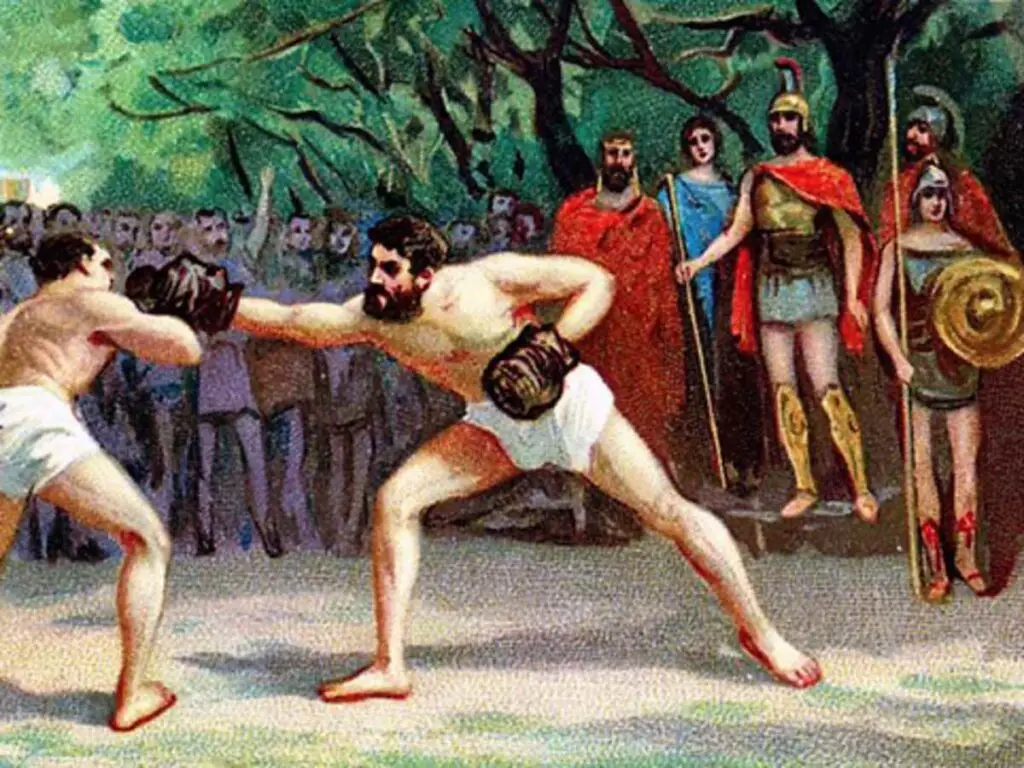Did you know that boxing dates back to ancient civilizations, where it was more than just a sport—it was a test of courage and endurance? As you explore the evolution from brutal matches in the Roman Coliseum to the refined rules established by the Marquess of Queensberry in the 19th century, you’ll find a rich tapestry of cultural significance woven throughout its history. What forces shaped this transformation, and how have legendary fighters emerged as icons within this complex narrative?
Ancient Origins of Boxing
Although boxing may seem like a modern sport, its roots stretch back to ancient civilizations, particularly in Greece and Rome, where it wasn’t just a contest of strength but also a significant aspect of cultural and religious life.
In these societies, boxing was often featured in athletic competitions, such as the ancient Olympic Games, highlighting its importance in showcasing physical prowess and discipline.
You’d find that participants used a rudimentary form of gloves, made from leather strips, to protect their hands yet still deliver powerful blows. This early version of boxing had no standardized rules, leading to fierce and often brutal matches.
The sport was intertwined with mythology and rituals, with boxers often invoking the gods for strength and protection.
As you explore deeper into this era, it becomes clear that boxing served multiple purposes: it provided entertainment, fostered community pride, and taught lessons in resilience.
The appeal of the sport transcended social classes, making it a common ground for various groups.
Ultimately, these ancient origins laid the groundwork for boxing’s evolution, influencing how it would develop into the structured sport we recognize today.
Evolution of Modern Rules
The evolution of modern boxing rules transformed the sport from its chaotic origins into a highly organized and regulated competition. Initially, boxing lacked standardized regulations, leading to unpredictable and often dangerous match conditions. The introduction of the Marquess of Queensberry Rules in 1867 was a pivotal moment. These rules established critical elements, such as the use of gloves, the three-minute round structure, and the ten-second count for knockdowns.
As you explore deeper into the evolution, you’ll see how these regulations improved safety and fairness. They also enhanced the sport’s legitimacy, allowing it to gain broader acceptance and popularity. The establishment of weight classes further refined the competition, ensuring that fighters faced opponents of similar size and strength, which mitigated the risk of mismatches.
Additionally, regulatory bodies emerged to oversee the sport, ensuring adherence to established rules and promoting fair play. Such oversight has contributed to boxing’s integrity and longevity.

Rise of Legendary Fighters
With a solid foundation of organized rules in place, boxing entered an era that would be defined by the emergence of legendary fighters who not only showcased their talent inside the ring but also became cultural icons.
These fighters transcended the sport, reflecting societal values and struggles, and inspired countless fans.
Consider the attributes that made these fighters legendary:
- Skill and Technique: They mastered the art of boxing, demonstrating precision and adaptability.
- Charisma and Persona: Their larger-than-life personalities drew in fans and created rivalries that captivated audiences.
- Cultural Impact: Many became symbols of hope and resilience, embodying the struggles of marginalized communities.
- Historic Fights: Their epic battles became defining moments in sports history, influencing future generations of athletes.
As you reflect on the rise of these legendary fighters, it’s clear they shaped not just the sport but also cultural narratives.
Their stories of triumph, heartache, and perseverance resonate deeply with fans, proving that boxing is about more than just competition; it’s a reflection of the human spirit.
The legacy of these fighters continues to inspire and uplift, ensuring their place in boxing history.
Impact of Media on Boxing
Media has played a transformative role in the evolution of boxing, shaping how fans engage with the sport and how fighters build their legacies.
With the advent of radio broadcasts in the early 20th century, boxing matches reached wider audiences, allowing fans to experience the thrill of the ring from their homes. This accessibility fueled interest and created a culture of anticipation surrounding major fights.
Television further revolutionized this engagement, turning boxing into a prime-time spectacle. Iconic bouts became national events, often drawing in millions of viewers and generating significant revenue through advertising and pay-per-view sales.
Prominent fighters learned to leverage media exposure, crafting their public personas to attract fans and endorsements.
Social media has taken this influence to new heights. Platforms like Instagram and Twitter allow fighters to connect directly with fans, share their training experiences, and promote upcoming matches.
This immediacy not only enhances fan loyalty but also shapes public perception of fighters.
Ultimately, media has transformed boxing from a localized sport into a global phenomenon, influencing how you view fighters and their journeys, while enhancing the overall excitement surrounding each bout.
Cultural Significance and Legacy
Boxing’s cultural significance extends far beyond the ring, resonating deeply within various communities and reflecting broader societal issues. This sport embodies narratives of struggle, triumph, and identity, making it a powerful medium for social commentary and change.
Consider the following aspects that highlight boxing’s legacy:
- Empowerment: For many, boxing serves as a means to transcend socio-economic barriers and gain respect in society.
- Identity: Fighters often represent their communities, becoming symbols of hope and resilience.
- Conflict Resolution: The sport has historically provided an outlet for aggression, allowing individuals to channel their frustrations in a structured manner.
- Cultural Exchange: Boxing fosters connections among diverse cultures, blending traditions and uniting fans worldwide.
As you analyze boxing’s role, it’s clear that it’s more than just a competition; it’s a reflection of human experience.
The sport continues to adapt and evolve, addressing contemporary issues while maintaining its roots. This dynamic relationship between boxing and society guarantees its relevance and enduring legacy, inviting ongoing dialogue about freedom, empowerment, and identity in an ever-changing world.